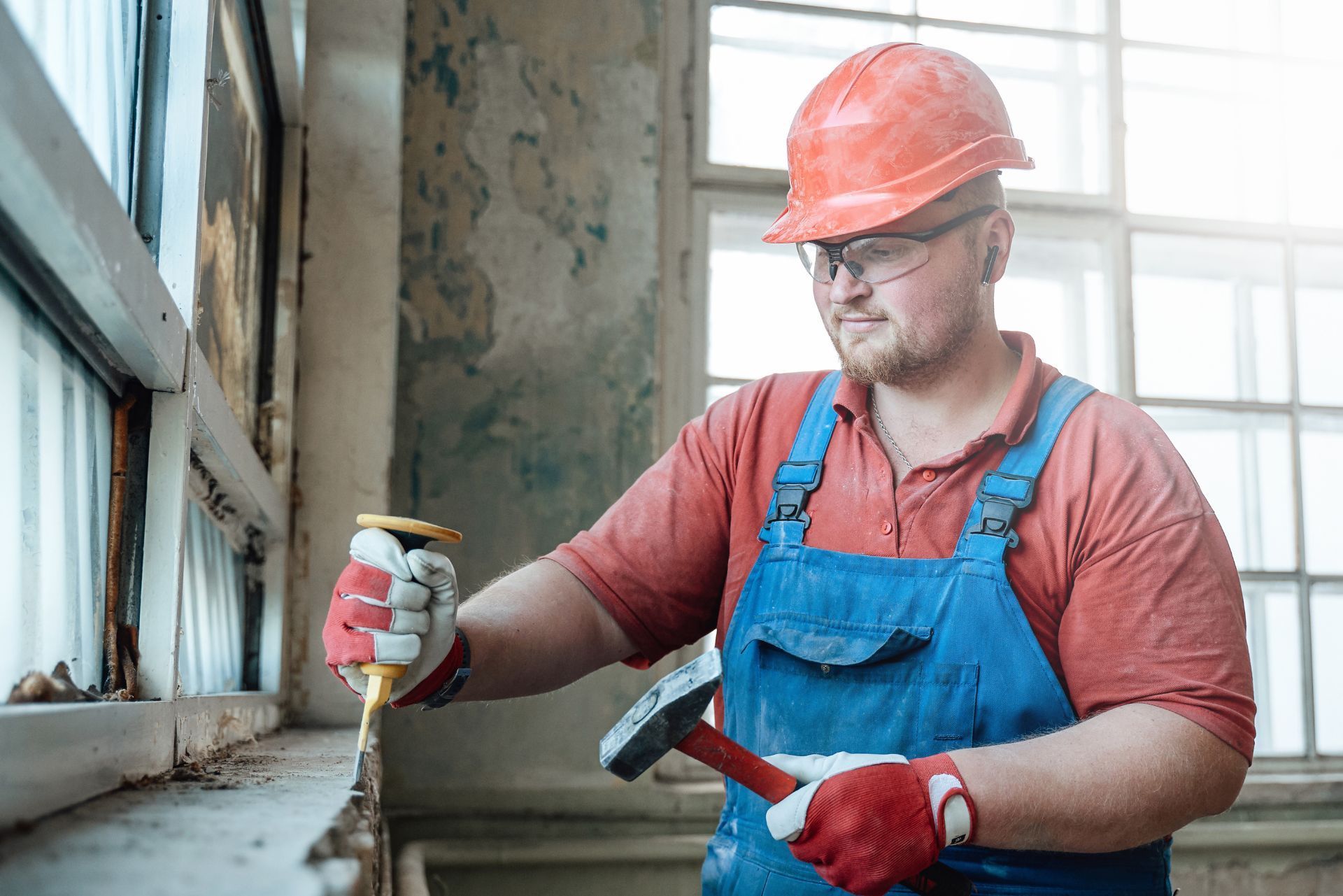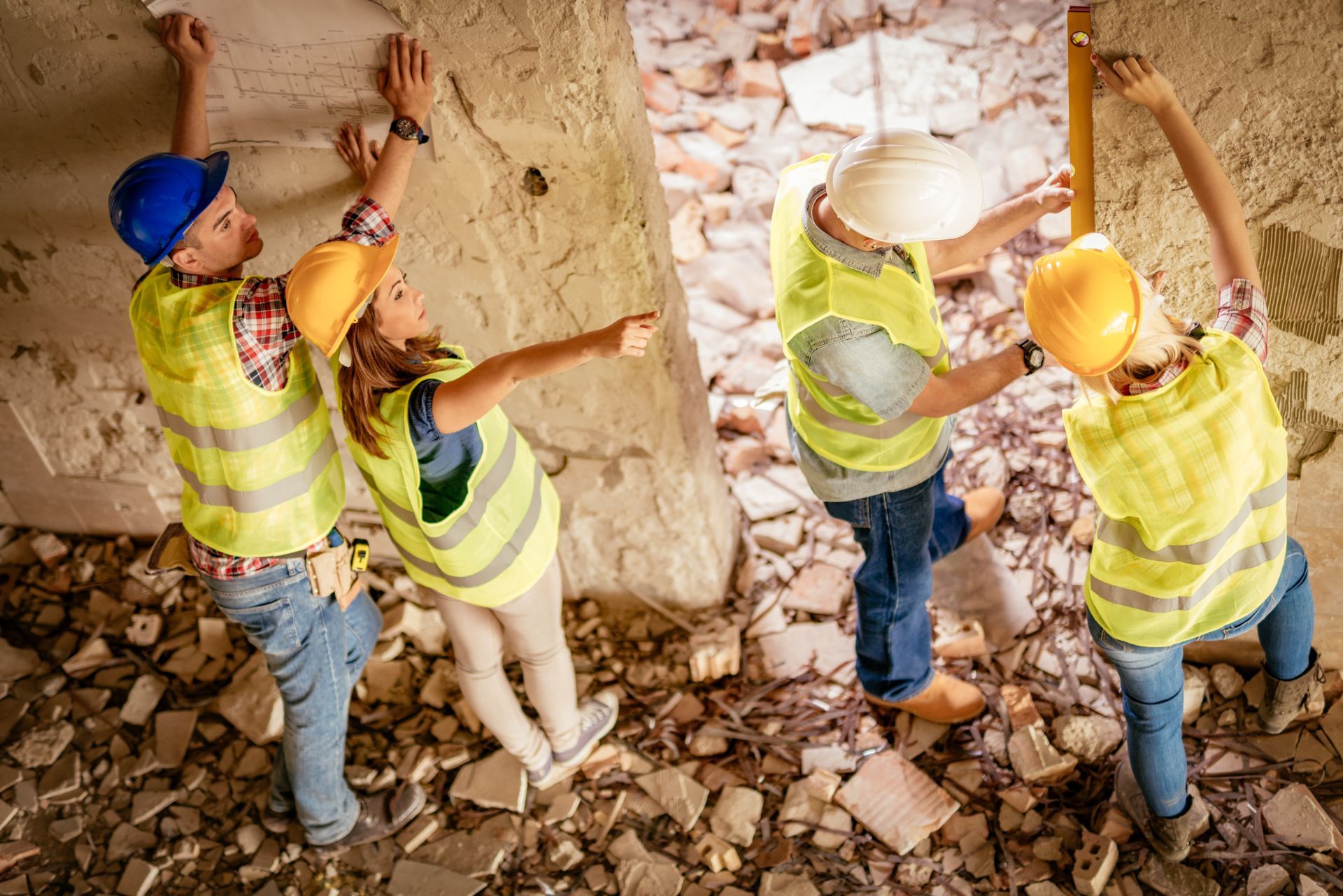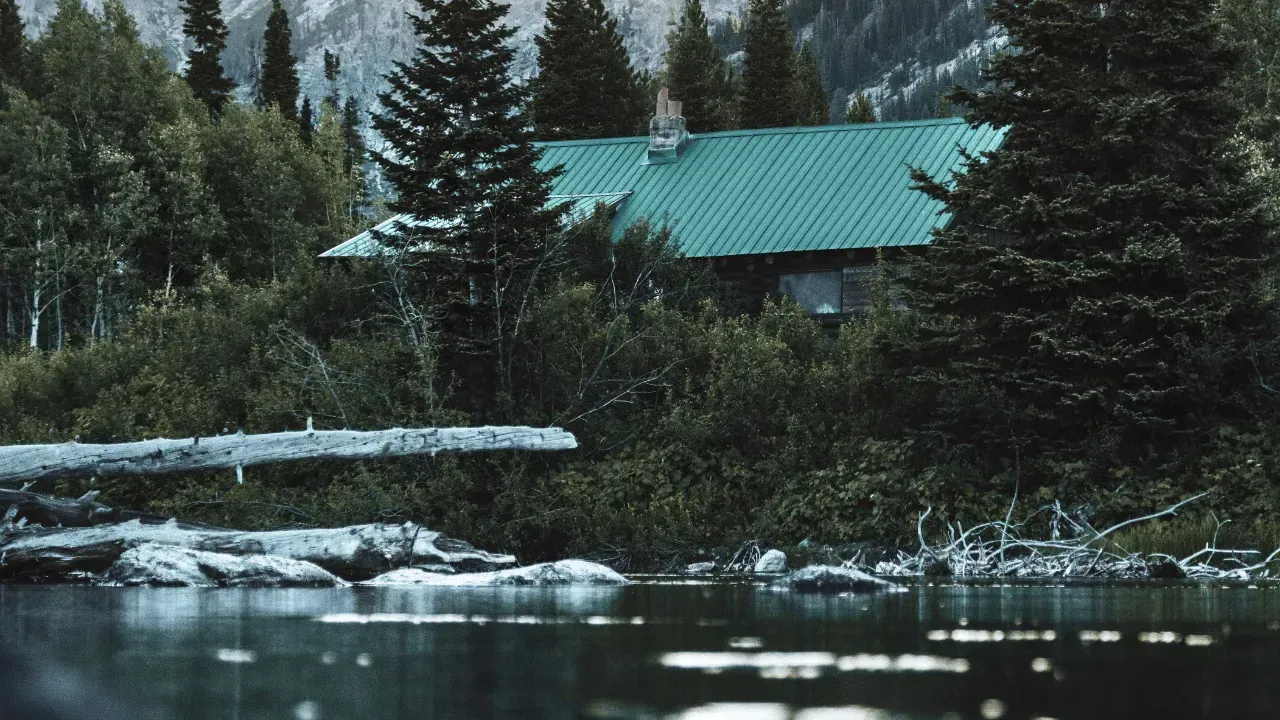Colorado Restoration Contractor Insurance

8:30am - 5:00pm Mon-Fri
We'll Reply in 15min*
Index
Why Restoration Contractor Insurance Matters in Colorado
Understanding the Financial Landscape of Restoration Projects
Insurance Challenges Unique to Colorado Restoration Businesses
Choosing the Right Insurance Partner in Colorado
Maintaining Compliance and Managing Claims Effectively
Final Thoughts on Colorado Restoration Contractor Insurance
Contact Us
Phone
303-421-5123
Location
9035 Wadsworth Parkway
Suite 2730B
Westminster, CO 80021
Restoration contractors in Colorado face unique risks every day. Whether tackling water damage, fire aftermath, or mold remediation, the stakes are high. One small oversight can lead to costly claims, project delays, or legal headaches. That’s why having the right insurance coverage isn’t just smart-it’s essential for protecting your business and your clients.
The restoration industry is expected to reach a value of about $45 billion globally by 2025, reflecting growing demand for these specialized services. Water damage restoration alone accounts for roughly 40% of all restoration work performed annually, underscoring its prominence in the sector. Understanding how insurance fits into this landscape can help Colorado contractors navigate risks confidently and build lasting client trust. For detailed industry insights, visit
ZipDo Education Reports 2025.
Why Restoration Contractor Insurance Matters in Colorado
Restoration work often involves entering damaged properties, managing hazardous materials, and operating heavy equipment. These factors create a complex risk environment. Insurance tailored for restoration contractors shields your business from financial losses due to property damage, bodily injury, or lawsuits.
Water, fire, and mold restoration each carry distinct challenges. Water damage restoration projects can cost between $1,000 and $3,000 per incident on average, with some projects rising to $5,000 or more depending on severity. Insurance claims related to water damage have increased by 10% recently, with average payouts exceeding $7,000. These figures highlight the financial exposure contractors face without proper coverage. Additionally, the frequency of severe weather events, such as heavy rains and snowmelt in Colorado, has led to an uptick in water-related incidents, further emphasizing the importance of having robust insurance in place.
Fire restoration projects often require weeks to complete, increasing labor and equipment costs. The aftermath of a fire can leave behind not only structural damage but also hazardous materials like soot and smoke, which require specialized handling. Mold remediation introduces health risks and regulatory compliance issues that can complicate claims and liability. Insurance policies designed for these specialties offer protection against these specific perils, helping contractors manage risk and maintain business continuity. Moreover, the emotional toll on clients dealing with fire or water damage can lead to increased scrutiny and expectations, making it essential for contractors to have the right coverage to protect their reputation and financial stability.
Key Coverage Types for Restoration Contractors
Restoration contractors typically require a combination of insurance products to cover the full scope of their operations. General liability insurance protects against third-party claims of bodily injury or property damage. Professional liability insurance covers errors or omissions during service delivery, which is critical when dealing with complex restoration processes. This type of insurance is particularly vital in a state like Colorado, where the diverse geography can lead to unique restoration challenges, from mountainous terrain to urban environments.
Workers’ compensation insurance is mandatory in Colorado and covers employee injuries on the job. This is especially important in the restoration industry, where workers may face risks from falls, exposure to hazardous materials, or accidents involving heavy machinery. Equipment insurance protects costly tools like moisture meters, which 65% of restoration firms use as essential assessment tools. Commercial auto insurance covers vehicles used to transport equipment and personnel, ensuring that contractors can respond quickly to emergency situations. Furthermore, with the rise of technology in restoration, including drones for aerial assessments and advanced drying equipment, having insurance that covers these innovative tools is becoming increasingly important.
Pollution liability insurance is another important policy for mold and water restoration contractors, as it covers contamination risks. Contractors should also consider inland marine insurance for tools and equipment in transit or storage. This coverage becomes particularly relevant in Colorado, where restoration contractors often travel long distances to reach job sites in remote or mountainous areas. Having comprehensive coverage not only protects the contractor's assets but also instills confidence in clients, who can rest assured that their restoration project is in capable hands.

Understanding the Financial Landscape of Restoration Projects
The restoration industry’s financial dynamics influence insurance needs and risk management strategies. Restoration companies typically operate with a gross profit margin around 25%, balancing project costs and overhead. The average client spends between $2,500 and $10,000 per restoration incident, reflecting project complexity and scope.
Insurance claims involving property restoration average about $8,500, with payouts increasing by 20% over the past five years. This upward trend signals rising repair costs and more frequent claims, making comprehensive insurance coverage vital for contractors. The growing frequency of natural disasters and extreme weather events has further exacerbated this situation, leading to a surge in restoration projects and consequently, insurance claims. As climate change continues to impact weather patterns, restoration companies must adapt to these evolving challenges, ensuring they have the necessary resources and coverage to handle increased demand.
Disputes over insurance claims affect 15-20% of restoration projects, requiring contractors to maintain thorough documentation and effective communication with insurers. Digital estimating tools, used by 65% of restoration companies, help streamline project bids and claims, reducing errors and delays. These tools not only enhance accuracy in estimating costs but also improve transparency between contractors and clients, fostering trust and collaboration. Furthermore, as technology advances, the integration of artificial intelligence and machine learning in estimating processes is on the rise, promising even greater efficiency and precision in the future.
Hiring skilled technicians remains a challenge, with 78% of restoration firms reporting difficulties in recruiting qualified staff. This labor shortage can impact project timelines and quality, adding another layer of risk that insurance helps mitigate. To address this issue, many companies are investing in training programs and partnerships with vocational schools, aiming to cultivate a new generation of skilled workers. Additionally, offering competitive wages and benefits has become essential in attracting talent, as the demand for restoration services continues to grow.
For more on project costs and industry trends, see Gitnux Restoration Industry Statistics 2025.
Cost Breakdown and Risk Factors
| Restoration Type | Average Project Cost | Average Insurance Claim | Typical Client Spend |
|---|---|---|---|
| Water Damage Restoration | $3,000 - $5,000 | $7,000+ | $2,500 - $10,000 |
| Fire Restoration | Varies, often higher due to extended timelines | Approx. $8,500 (property restoration average) | $5,000 - $10,000+ |
| Mold Remediation | Varies based on contamination extent | Included in property restoration claims | $3,000 - $8,000 |
Insurance Challenges Unique to Colorado Restoration Businesses
Colorado’s climate and geography present specific challenges for restoration contractors. Seasonal weather patterns cause fluctuations in water damage claims, especially during spring snowmelt and heavy rain periods. Fire restoration demand spikes during wildfire season, which has intensified in recent years. The state's diverse topography, ranging from mountainous regions to arid plains, also influences the types of restoration work needed, creating a unique set of challenges that contractors must navigate.
These environmental factors increase the frequency and severity of restoration projects, driving up insurance claims and premiums. The state’s regulatory environment also requires contractors to stay current with licensing and safety standards to maintain coverage eligibility. Additionally, the increasing prevalence of natural disasters in Colorado has led to a more competitive market, with restoration businesses vying for limited resources and insurance coverage. As a result, understanding the nuances of local insurance policies becomes crucial for contractors aiming to protect their operations.
Insurance carriers may scrutinize restoration businesses’ risk management practices more closely in Colorado due to these factors. Maintaining detailed project records, investing in employee training, and using technology like moisture meters and digital estimating tools can improve underwriting outcomes. Furthermore, adopting comprehensive risk assessment strategies can help businesses identify potential hazards before they escalate into costly claims. This proactive approach not only enhances safety but also fosters a culture of accountability and professionalism within the workforce.
Given the average age of restoration business owners is 45 years, many are balancing growth ambitions with risk aversion. Smart insurance planning helps protect their investments and reputation. As these owners look to the future, they must also consider how emerging trends, such as sustainability and eco-friendly restoration practices, can influence their insurance needs. By aligning their business strategies with environmental responsibility, they may find new opportunities for coverage tailored to innovative practices.
Addressing Labor Shortages and Skill Gaps
With 78% of restoration companies struggling to hire skilled technicians, businesses must consider how insurance can support workforce stability. Policies that cover employee injuries and provide business interruption protection can ease the impact of labor shortages. Moreover, the rising costs of recruitment and training can strain budgets, making it essential for contractors to find insurance solutions that offer financial relief during these challenging times.
Training programs and certifications improve staff qualifications and reduce on-site accidents, which insurers value. Contractors who demonstrate proactive risk management often benefit from better insurance terms and lower premiums. Additionally, creating partnerships with local trade schools and vocational programs can help bridge the skill gap while fostering a pipeline of qualified candidates. By investing in the next generation of restoration professionals, businesses not only enhance their workforce stability but also contribute to the overall growth and resilience of the industry in Colorado.
Choosing the Right Insurance Partner in Colorado
Finding an insurance provider that understands the restoration industry’s nuances is crucial. Look for carriers with experience insuring water, fire, and mold remediation businesses and a track record of responsive claims handling.
Ask about coverage options tailored to your specific services and risks. For example, if your company frequently handles water damage restoration, ensure your policy covers the typical project costs and potential liability exposures associated with that work.
Digital tools and moisture meters are standard in the industry, so your insurer should recognize their role in risk mitigation. A partner who supports your use of technology can help you optimize coverage and reduce claims disputes.
Colorado contractors should also consider how insurance fits into their overall business strategy. Adequate coverage protects cash flow, supports client confidence, and helps meet contractual requirements.
More detailed statistics on restoration industry insurance can be found at Gitnux Restoration Industry Statistics 2025.
Questions to Ask Your Insurance Provider
- Does the policy cover all restoration services offered, including water, fire, and mold?
- Are there limits on equipment or tool coverage, especially for moisture meters?
- What is the claims process like for restoration projects with insurance disputes?
- Does the policy include pollution liability for mold remediation?
- Are digital estimating tools recognized as part of your risk management approach

Maintaining Compliance and Managing Claims Effectively
Insurance is only as good as your ability to manage claims and comply with policy requirements. Restoration contractors should keep meticulous records of all projects, including moisture readings, photographs, and client communications.
Claims disputes occur in up to 20% of restoration projects, often due to documentation gaps or misunderstandings with insurers. Being proactive and transparent can prevent costly delays or denials.
Colorado contractors should also stay informed about changes in state regulations affecting restoration work and insurance standards. Regular training and policy reviews ensure ongoing compliance and coverage adequacy.
Effective claims management not only protects your bottom line but also strengthens client relationships and your reputation in a competitive market.
Tips for Streamlining Claims and Documentation
- Use moisture meters consistently to provide objective data on water damage.
- Leverage digital estimating tools to generate accurate and detailed project bids.
- Maintain a centralized system for storing project photos, reports, and communications.
- Communicate clearly with insurance adjusters and clients throughout the restoration process.
- Train staff on documentation best practices and insurance requirements.
Final Thoughts on Colorado Restoration Contractor Insurance
Restoration contractors in Colorado operate in a demanding environment where risks are high and margins can be tight. Insurance tailored to water, fire, and mold remediation businesses is a critical safeguard that helps protect your livelihood.
Understanding the financial realities of restoration projects, the unique challenges posed by Colorado’s climate, and the importance of skilled labor can guide your insurance decisions. Partnering with an experienced insurer who appreciates the restoration industry’s complexities will make managing risk more straightforward.
With the restoration industry growing steadily at an annual rate of 4.2%, now is the time to ensure your coverage keeps pace with your business ambitions. Taking a proactive approach to insurance will help you weather claims, disputes, and unexpected setbacks-keeping your Colorado restoration business resilient and ready for whatever comes next.
For more information on industry trends and insurance insights, visit
ZipDo Education Reports 2025.
Frequently Asked Questions
Q: What types of insurance are essential for restoration contractors?
A: General liability, professional liability, workers’ compensation, equipment insurance, and pollution liability are key coverages for restoration businesses.
Q: How much does water damage restoration typically cost?
A: Average project costs range from $1,000 to $5,000, depending on the extent of damage and services required.
Q: Are insurance claims for water damage increasing?
A: Yes. Water damage claims have risen by about 10% recently, with average payouts exceeding $7,000.
Q: Why do restoration projects often involve insurance disputes?
A: Disputes usually arise from documentation issues, coverage misunderstandings, or disagreements over damage assessments.
Q: How can digital tools help with restoration insurance claims?
A: Digital estimating and moisture meters provide accurate data that supports claims and reduces disputes.
Q: Is pollution liability important for mold remediation?
A: Yes. Pollution liability covers contamination risks associated with mold, which is critical for remediation contractors.




